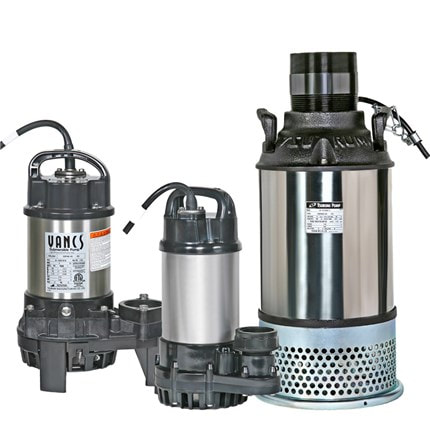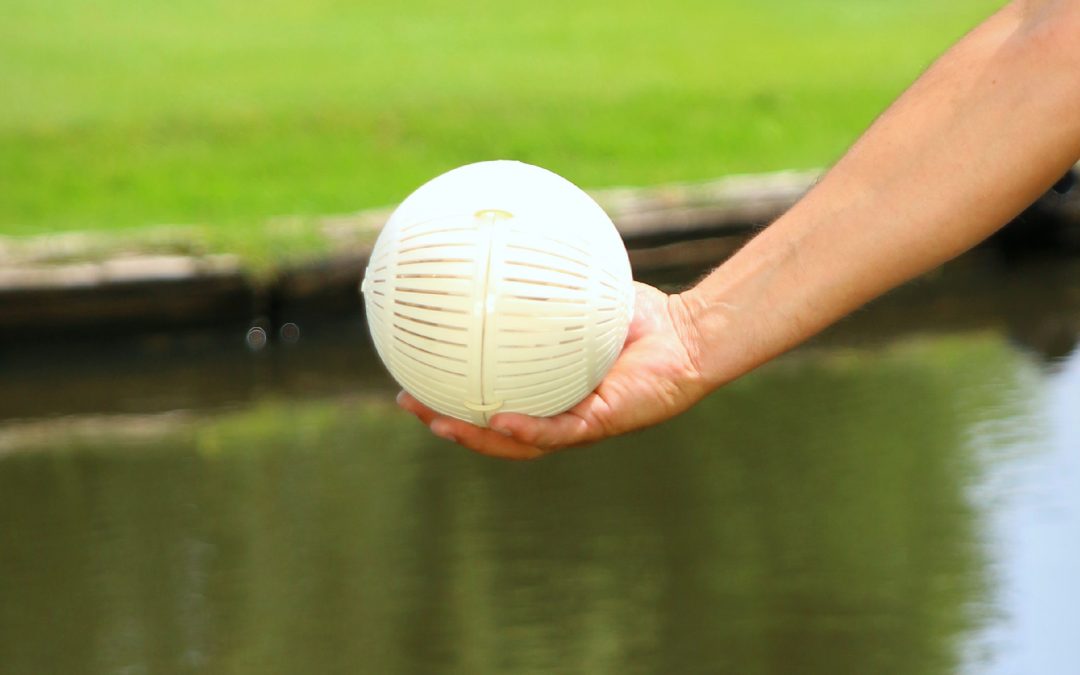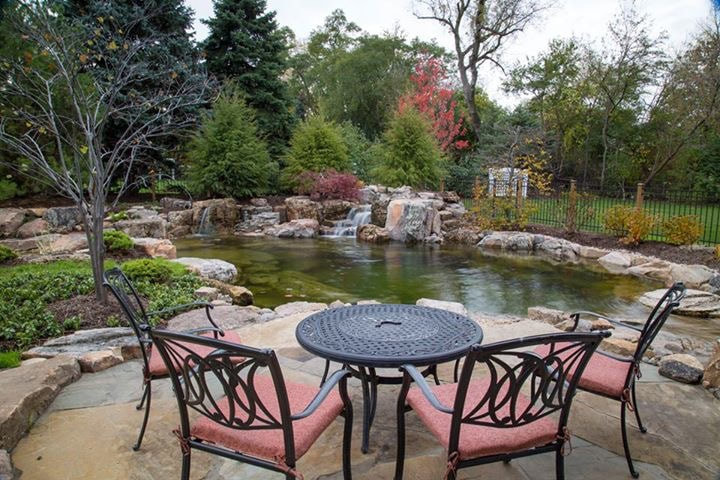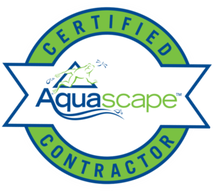Pond Maintenance in Minneapolis and Surrounding CitiesMost water gardeners are aware of the importance that good quality water plays in a pond habitat. Not knowing how to get or keep water quality can prove challenging to some pond owners. Your water may be clear, but your fish may not be acting like you’re used to seeing, which can signify that something might be a little off in your pond’s water. Follow our 7 tips below to help keep your pond water clean! 1. Maintain a healthy koi fish populationIf you have more than 10” of fish for every 100 gallons of water, your pond is likely over-populated. Excessive fish waste can cause an imbalance in pond water. Consider finding some of them a new home. Many pond retailers and contractors will accept your fish. 2. Don’t over-feed your fishWhen you feed fish more than they can eat, the uneaten food is left to decay in the pond. Be careful not to feed your fish more than once per day, and no more than they can eat in 2 to 3 minutes. Remove all excess, leftover food. 3. Create a proper balance of plantsAt season’s peak, you should have no more than 40% to 60% of the surface area of your pond either covered or shaded by plants. Too many plants can cause oxygen deficiencies at night due to the photosynthetic process, when the plants take in oxygen and give off carbon dioxide. 4. Choose the right size pond pump for your pondYou should be circulating the entire pond’s water volume a minimum of once every hour. Make sure your pump’s flow isn’t restricted by debris and be careful not to pump water higher than it was intended. Every pump has its flow limitations. Refer to the chart on the outside of the pump’s box to make sure you’re making the right choice for your pond. 5. Clean debris from pond before it has a chance to decay Decaying debris, combined with fish waste and leftover fish food, can cause ammonia levels to spike in your pond. Clean out your pond and add beneficial microbes such as Aquascape’s Beneficial Bacteria to help keep it healthy and clean. 6. Choose proper filtration for your pond. Your filter should match the size of your pond. Remember, most manufacturers rate their filters based on ideal circumstances, and if you exceed those, your filter becomes less effective. Always up-size your filter so that it can handle more than the capacity of your pond. Also remember to clean your filter according to the manufacturer’s instructions. 7. Keep your pond cool during the dog days of summer. When pond water exceeds 75º Fahrenheit, it has a more difficult time retaining acceptable levels of dissolved oxygen. This is why it’s important to have your pond shaded by aquatic plants (see tip #3). Fish need oxygen to survive. If you see them at the pond’s surface gasping for air, add an aerator to help them during times of extreme heat. By Aquascape inc 2016.
3 Comments
The Pond Co of Bloomington, MN sells a variety of pond pumps including Tsurumi pond pumps WATER FEATURE PUMP SERIES Whether this is your first pond or your tenth, a Tsurumi Water Feature Pump is the right choice to power your stream, waterfall, fountain, or any water feature. Tsurumi offers a wide range of pumps, including 230V and/or 3 phase pumps, 1/5 – 1 HP, and 1.5” – 3” discharges. Select your new or replacement Tsurumi Pump for your skimmer, vault, or pond. ModelDischarge Size(in.)Motor Output(HP)Diameter(in.)Height (in.)Max Solid Diameter(in.)Weight(lbs.)View Details 2OM1.51612 7/160.39413View Details 2PU21/58 7/814 13/161.3813View Details 3PN21/39 5/1614 3/161.3816View Details 4PN21/2617 3/81.3816View Details 8PN21614 15/161.3820View Details 12PN3111 5/817 3/81.3832View Details 4HF41/29 13/1618 11/160.31540View Details TECHNICAL SPECIFICATIONS2OM, 2PU, 3PN, 4PN, 8PN, 12PN:
Healthy Ponds, Pond treatments and how to use the sphere? AQUASPHERE PRO 101 | Pond Maintenance The AquaSphere®PRO is an all-natural dispensing system that introduces beneficial bacteria into the water, which reduces excess nutrients and breaks down organic matter that clouds water. The AquaSphere®PRO sinks to the bottom of your water feature and will treat fresh water ponds and lakes for up to 30 days. The spheres are biodegradable, making cleanup safe and easy. It is made from a corn based resin and as long as there is an organic sludge layer built up in your pond the sphere will break down over time. If there is not a sludge layer you may want to remove the sphere each month and place it in the garbage. This may be the case for smaller backyard ponds and cement water features. Unlike other bacterial pond products, the AquaSphere®PRO, has a patented time release technology. This makes for fewer applications as the sphere releases beneficial bacteria over the course of 30 days. It’s as easy as applying a new sphere at the beginning of each month and forgetting about it. When applying the sphere be sure to apply in different locations from month to month. The sphere will sink to the bottom of the pond consuming the organic sludge built up and throughout the water column. The bacteria will be more concentrated where the sphere is placed and is why we recommend different locations. It is safe to begin treatments when the water temperature reaches 45°F, and to repeat treatments every 30 days until the water temperature subsides below 45°F. Also, it is safe to over treat your pond and at times will be recommended. Under treating can, and will likely lead to poor results. Our AquaSphere®PRO is veterinarian approved and safe for fish, plants, animals, pets and people. When To Use
The secret to healthy koi and pond fish in minneapolis, MNYou love your finned friends and can’t wait to see them swimming about after the winter thaw. While you’re dreaming of summer days by the pond, start thinking about your fish and taking measures to ensure they remain healthy throughout the year. Most fish issues can be avoided by following a few simple, preventative measures.
1. Understand Water QualityThe majority of issues with fish are caused by poor water quality. Make sure that the fish population is under control and not over-crowded. A general rule of thumb for pond sticking is to ensure you have no more than ten inches of fish (in length) for every 100 gallons of water in your pond. So if your pond is 1000 gallons, you can have a total of 100 inches of fish. You should balance your fish population with a variety of pond plants. Your plants will absorb fish waste as fertilizer and will starve algae of this fertilizer. Beneficial bacteria should be added to your pond on a regular basis to help keep it balanced. Consider adding the Aquascape Automatic Dosing System, an electronically operated dispenser automatically releases the proper dose of water treatments for your pond. 2. Buy Your Fish from a Responsible RetailerNever buy sick fish and if possible, quarantine new fish for a few days before adding them to your pond. Always ask how long the retailer has had the fish. If they have just received them, ask the retailer to hold the fish for a few days to make sure the fish recovers from stress related to transport and new water chemistry. You can read our 10 tips for buying fish to help you make the right choices 3. Keep a Close Eye on Your FishWatching your fish is one of the great pleasures in Living the Aquascape Lifestyle™! If you notice any signs of disease or unusual behavior, refer to our fish treatments page which includes a handy chart for identifying and treating the most common pond fish issues. You can always consult the store or garden center where you purchased the fish, or visit our favorite koi vet’s web page for even more information. 4. Test Your WaterTest your water if you suspect there might be a quality issue. The level of pH can affect your fish in an adverse manner. But if you’re consistently adding beneficial bacteria, have proper pond filtration, and a good balance of fish and plants for the size of your pond, you should rarely have issues. Keep in mind that outside factors like lawn chemicals can leach into your pond and cause problems. It’s best not to apply chemicals to plants or grass near your pond. 5. Feed Your Fish a High Quality FoodFeeding a high quality fish food will not affect water quality and will ensure that your fish are getting all the vitamins and nutrients they need to maintain proper health. Be careful not to overfeed your fish as uneaten fish food will decay and can cause an imbalance in pond water. Feed your fish no more than they can eat in five minutes. In the summer, you can feed them up to three times per day. In cooler temperatures, feed them only once – and stop feeding your fish altogether when pond water temperature drops below fifty degrees. Prevention is the best cure for your finned friends! The easiest way to avoid disease problems is to maintain optimum water conditions. Feeding a quality diet and adding beneficial bacteria on a regular basis helps maintain a balanced ecosystem. Disease problems must be addressed in the early stages to be successful. By following these simple tips you’ll enjoy seeing your pond fish swim happily and healthily throughout the pond season! Written by aquascape inc Winter water feature keeping Bloomington, MN Pond maintenace.Our Top Five Tips for Winter Pond Keeping
December 13, 2019 Maintenance and Care Silvery ice formations and velvety white drifts of snow create a dreamy landscape with a winter water feature as the focal point. If you’re like most people, you shut down your water feature for the winter season. While this is a perfectly viable option for most people, some of you opt to keep your water feature running. To ensure that your pond and waterfall provide all the pleasures of a winter wonderland, be sure to follow our handy winter pond keeping tips. 1. Check for Ice Dams if you keep your pond running during the frozen months of winter, you’ll enjoy the beautiful ice sculptures that form in the stream and waterfall. Although stunning, it’s possible that the ice buildup can form dams that could divert your pond water out of the pond. Check on the waterfall and stream and monitor the water level periodically throughout the winter. If you see an ice dam forming or the water level dropping at a high rate, your pond might be losing water because of the frozen sculpture and it might be time to turn off the pump for the winter. If you decide to leave the pond running until warmer weather however, your main concern is to ensure there is enough water for the pump(s) to operate properly. 2. Add Water to Your PondDuring the winter months, the usual water supply options are not available. Outdoor water spigots and automatic water fill valves should be turned off to prevent pipes from freezing and cracking. Therefore, pond owners who run their systems during the winter will have to find an alternate water source to replenish their pond. Water can be supplied via a hose run from inside the house or by making multiple trips with a large bucket. Generally speaking, it’s not uncommon to have to go out a few times a month during the winter to “top off” the pond. 3. Check the Circulation of WaterPump size is important when determining a waterfall’s ability to operate during the winter. A pump that provides at least 2,000 gph can be operated throughout the winter without a problem, as long as it runs continuously. Moving water will usually keep a hole open in the ice around the waterfalls and in front of the circulation system. However, repeated days in sub-zero temperatures may lead to excessive ice build-up. You can add a pond de-icer to help keep a hole in the ice, or incorporate a submersible pond pump such as the AquaForce Pump or the Pond Powerhead. Both provide agitation at the surface of the pond to keep a hole open. 4. Be Assured of Filters and Pipes Most good filters are constructed out of rotational-molded polyethylene, and are designed to bow and bend with the freezing and thawing effects of winter. The PVC flex pipe is reinforced and will also not crack unless water is left in the pipe over the winter and allowed to freeze. If you decide to keep the pump running all winter long, there will still be a constant flow of water traveling through the pipe, and the moving water will not freeze. 5. The Bottom Line for Winter Pond KeepingThe bottom line for winter pond keeping is maintenance. Roughly 70 percent of pond owners in the colder climates decide to shut down their system because they don’t enjoy tending to their water garden during the bitter months of the winter. The aesthetic rewards of the winter pond are absolutely worthwhile, so by all means; don’t be afraid to keep the system running as long as possible. Shutting down a pond during winter is also an option. Just be sure you take precautionary measures to preserve fish, plant, and pump life. Article written by Aquascape Inc 2019 |
AuthorThe team @ The Pond Company! Archives
February 2020
Categories |
952.378.1079


 RSS Feed
RSS Feed
